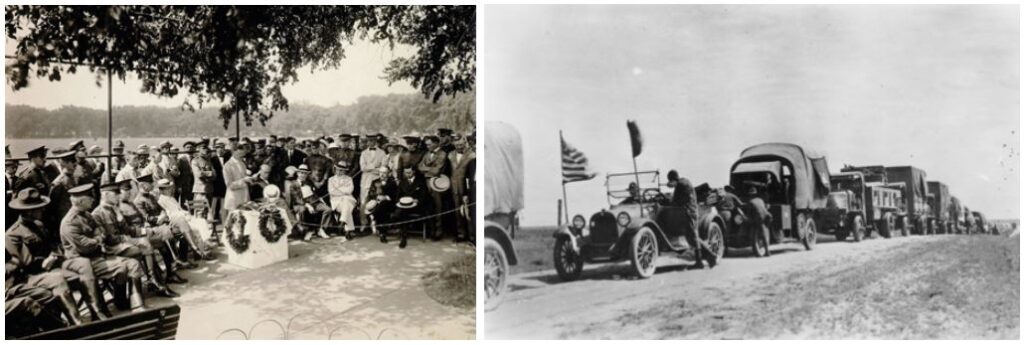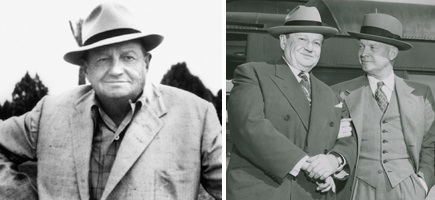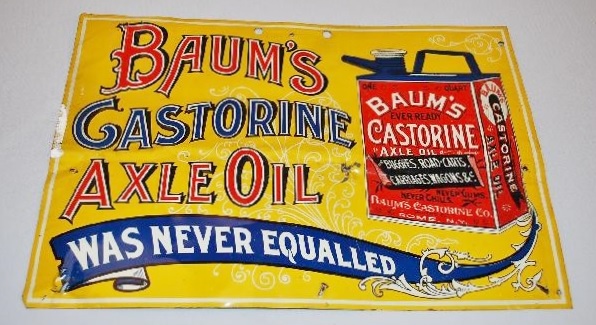July 5, 1900 – Edison films Standard Oil Refinery Fire in New Jersey –
An early morning lightning strike at the Standard Oil Company refinery at Bayonne, New Jersey, set off explosions in three storage tanks, each with a capacity of 40,000 barrels of oil. Within minutes, the company’s fire department and tugboats rushed to fight the blaze.

Screenshots from Thomas Edison’s film of destruction of Standard Oil Company’s refinery at Bayonne, New Jersey, on July 5, 1900, courtesy Library of Congress.
“The tugboats moved the company ships and oil-filled barges away from its burning docks to safe waters,” noted the Jersey Journal in 2017. The Bayonne refinery fire was one of the first newsreels produced by the Thomas A. Edison Company (it can be viewed here). As bad as the conflagration was, there were no fatalities.
July 6, 1988 – Piper Alpha North Sea Tragedy
An explosion and fire on Occidental Petroleum’s Piper Alpha offshore production platform in the North Sea resulted in the deaths of 167 out of 224 personnel. It remains the most deadly offshore disaster of the petroleum industry.

“Smoke pouring form Piper Alpha throws a pall over the North Sea 18 hours after the explosion,” reported The Daily Telegraph of London on July 8, 1988.
Piper Alpha had been receiving natural gas from two platforms while exporting gas to a compression platform. The initial explosion was caused “by a misunderstanding of the readiness of a gas condensate pump that had been removed from service for maintenance of it’s pressure safety valve,” according to safety expert Gary Karasek.
Improved offshore platform designs, operations engineering, evacuation technologies, and safety procedures emerged following the official inquiry, noted Karasek. “It was a ground-breaking effort, with numerous detailed findings and 106 recommendations, which were readily accepted by industry.”
July 7, 1919 – Start of First Transcontinental Motor Convoy
Beginning with dedication of the “Zero Milestone” marker on the Ellipse south of the White House, a convoy of U.S. Army military vehicles began a cross-country trek to San Francisco. Lt. Col. Dwight Eisenhower participated as an observer for the War Department during the “truck train,” which traveled to Gettysburg to connect to the Lincoln Highway, the first auto road across the United States.

The July 7, 1919, dedication of a “Zero Milestone” on the Ellipse south of the White House preceded the Army’s first attempt to send a convoy of military vehicles across the country. Photos courtesy Dwight D. Eisenhower Presidential Library.
The convoy’s 81 motorized vehicles took 62 days to traverse 3,251 miles. It included five ambulances, four kitchens, a truck-mounted blacksmith shop, two machine shops, and a trailer hauling an artillery tractor. Firestone Tire and Rubber Company provided two trucks for carrying spare tires.
According to the Dwight D. Eisenhower Presidential Library, “Lt. Col. Eisenhower learned first-hand of the difficulties faced in traveling great distances on roads that were impassable and resulted in frequent breakdowns of the military vehicles. These early experiences influenced his later decisions concerning the building of the interstate highway system during his presidential administration.”
July 7, 1935 — Oil Boom comes to Rodessa, Louisiana
Although natural gas had been discovered near Rodessa, Louisiana, five years earlier, an oil well completed by United Gas Public Service Company turned the Caddo Parish community into a classic boom town. The well produced 8,000 barrels barrels of oil a day from a depth of 6,048 feet.
“Tents and cots dotted the area, even in the cemetery,” notes a Rodessa historical marker. “Shotgun houses of tin and corrugated iron sprang up everywhere. By the spring of 1936, more than 100 rigs were running in the field.” But production from the Rodessa oilfield, which by 1937 extended into two Texas counties, declined by the early 1940s. The discovery well was plugged after eight years of production, ending the community’s reign as an oil boom town.
July 7, 1947 – Sid Richardson starts Charitable Foundation
Independent producer and Western art collector Sid Williams Richardson (1891-1959) established the Sid Richardson Foundation to benefit Texas hospitals. schools, and colleges.

Sid Richardson’s friends included President Dwight D. Eisenhower.
One of the wealthiest men in the nation, Richardson had made oil discoveries as early as 1919, but struggled in the exploration and production industry until 1933. The lifelong Texas resident later formed many partnerships, including establishing the Richardson and Bass Oil Producers Company of Fort Worth.
“Mr. Sid” became a leading collector of paintings by Frederic Remington and Charles M. Russell, today on display in Fort Worth’s Sid Richardson Museum.
July 8, 1848 – Congress charters Washington Gas Light Company
Four days after the laying the cornerstone of the Washington Monument, an Act of Congress established the Washington Gas Light Company, which manufactured “town gas” for lighting and heat. The new utility would construct giant tanks (gasometers) on 6.5 acres of gasworks in the D.C. neighborhood of Foggy Bottom.

Detail of an early view from the Washington Monument showing Washington Gas Light Company’s West Station Gas Works at Foggy Bottom. A “gasometer” tank can be seen at top right. Photo courtesy Washington Gas, celebrating its 175th anniversary in July 2023.
“The public clamored for gas lighting like that already available in Baltimore and Philadelphia (see Illuminating Gaslight), and after multiple unsuccessful petitions to Congress, a utility, the Washington Gas Light Co., received its charter,” explained local historian Kent Mountford. “George Riggs and William Corcoran played significant roles in the company and WGL, as it was known, supplied the Capitol building with illuminating gas until 1896.”
Now celebrating its 175th anniversary, Washington Gas began introducing natural gas to the D.C. region in 1931, when President Herbert Hoover opened a pipeline valve and started the flow from gas fields in Kentucky and West Virginia.
July 8, 1937 – War Secretary approves Mile-Long Gulf Drilling Pier
President Franklin Roosevelt’s Secretary of War, Harry Woodring, approved an ambitious engineering plan to build a one-mile pier into the Gulf of Mexico to explore for oil at offshore salt dome formations. Woodring approved drilling of exploratory wells near McFaddin Beach at Port Author, Texas, by the Humble Oil and Refining Company.
Humble Oil built the experimental pier on a 60-acre lease eight miles east of High Island in Galveston County. The company drilled using three rigs, but found no oil. A hurricane destroyed the pier in 1938. Learn more by visiting Galveston Bay’s offshore rig museum, the Ocean Star.
July 9, 1815 – West Virginia Natural Gas Discovery
Natural gas was discovered accidentally by Capt. James Wilson during the digging of a salt brine well within the present city limits of Charleston, West Virginia (Virginia in 1815). Earlier, a young surveyor, George Washington, had written about “burning springs” – petroleum seeps – to the north, along the Kanawha River.
Awarded a land grant for his service in the French and Indian War, Washington acquired 250 acres along the river. He later explained he chose the location, “on account of a bituminous spring which it contains, of so inflammable a nature that it burns as freely as spirits.”
In a 1994 history of West Virginia’s oil industry, author David L. McKain concluded, “This was in 1771, making the father of our country the first petroleum industry speculator.”
July 9, 1883 – Finding Oil in the Land of Oz
The future author of the children’s novel The Wonderful Wizard of Oz started a business selling petroleum products in Syracuse, New York. The store offered lubricants, oils, greases — and “Baum’s Castorine, the great axle oil.”

L. Frank Baum’s “Castorine” oil sales trips may have led to his idea of a Tin Woodman character.
L. Frank Baum — whose father had found success in early Pennsylvania oilfields — served as chief salesman for Baum’s Castorine Company, which operates today in Rome, New York. Reporting on the opening, the Syracuse Daily Courier newspaper said Baum’s Castorine was a rust-resistant axle grease concoction for machinery, buggies, and wagons. The axle grease was advertised to be “so smooth it makes the horses laugh.”

L. Frank Baum founded his oil company in New York.
Although Baum sold the Castorine business in 1900, an Oz historian researched company records in Rome, New York, and found the idea for the Tin Man character began with Baum’s oil.
Learn more in Oil in the Land of Oz.
_______________________
Recommended Reading: Death and Oil: A True Story of the Piper Alpha Disaster on the North Sea (2011); Remington and Russell: The Sid Richardson Collection
(1994); Where it All Began: The story of the people and places where the oil & gas industry began: West Virginia and southeastern Ohio
(1994); Finding Oz: How L. Frank Baum Discovered the Great American Story
(2009). Your Amazon purchase benefits the American Oil & Gas Historical Society. As an Amazon Associate, AOGHS earns a commission from qualifying purchases.
_______________________
The American Oil & Gas Historical Society (AOGHS) preserves U.S. petroleum history. Become an AOGHS annual supporting member and help maintain this energy education website and expand historical research. For more information, contact bawells@aoghs.org. © 2023 Bruce A. Wells. All rights reserved.


